| Overview |
When creating Omnify objects, you can identify "Required" and "Default" fields.
Required fields indicate fields that must be assigned values for the system to allow the object to be created.
Default fields indicate fields that will be presented to the user on the New Object wizard but do not require a value for the system to allow the object to be created.
Required and Default fields can be defined on a per type basis (and per category basis for Items).
Required fields can be assigned across all stages of the workflow or assigned to be required only when a specific stage becomes active.
When defining required fields, you can also set a default value for that field.
To define Required or Default fields, select the Default/Required Fields option from the Page Navigator.

|
 |
Page Navigation/Object Selection |
Top |
|
The Required Fields page contains 2 main areas:

| Object Type/Stage Selection |
Select the object, types/categories, and stages to assign required fields |
| Field Selection |
Select required fields and default values for the selected object, type, and stage |
To assign required fields, first select the Object and Type from the Class drop list.
Class options are: Item Type, Item Category, Change/ECO Type, Quality/CAPA Type,
Vendor Item, Project Type, Training Type, Vendor Type, and Service Object Type.

Once the Class is selected, the object field list will display the available field values for the selected class.


The Fields Selection list will also display the available fields for the selected class.
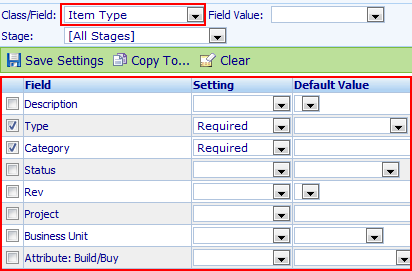
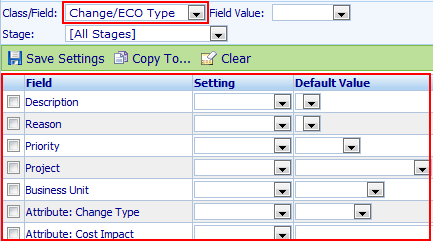
|
|
|
Required fields can be assigned to all stages of the workflow or assigned to be required only when a specific stage becomes active.
Once the Object is selected, you can then specify a stage (or all stages) form the Stage drop list.
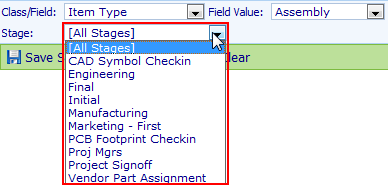
Selecting the [All Stages] option will force the required fields to be assigned to the object regardless of the active stage.
|
 |
Assigning Required Fields |
Top |
|
Once the Class, Class Type/Field Value, and Stage options are selected, you can then specify the required fields.
To specify a required field, check the Field checkbox.
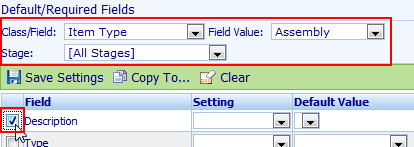
Once the Field checkbox has been checked, select the Setting option.

The Settings drop list provides the following options:
| Required |
The field will be required to contain a value |
| View/Default |
The field will be visible but a value does not need to be assigned |
You can define or select a default value from the Default Value option.

If required fields are specified for All Stages, selecting a specific stage will display and disable the default/All Stages required fields.
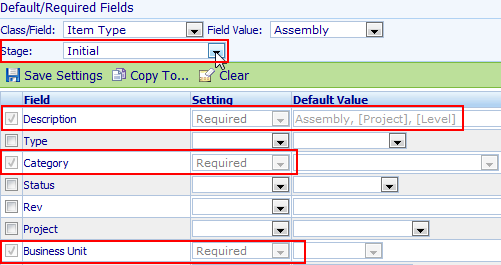
|
 |
Saving/Copying Field Settings |
Top |
|
Once the object, type, stage, and required fields have been assigned, click the Save Settings toolbar button to store the required fields.
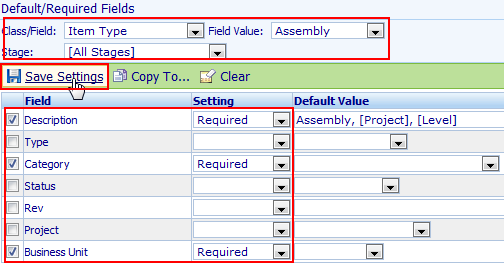
You can copy the setting from one class/type to another by clicking the Copy To... button.
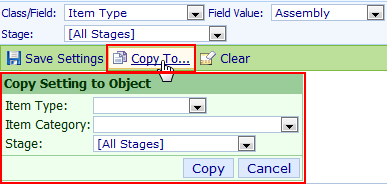
From the Copy To dialog box, you will be able to select the object type and stage to copy the current settings to.
|